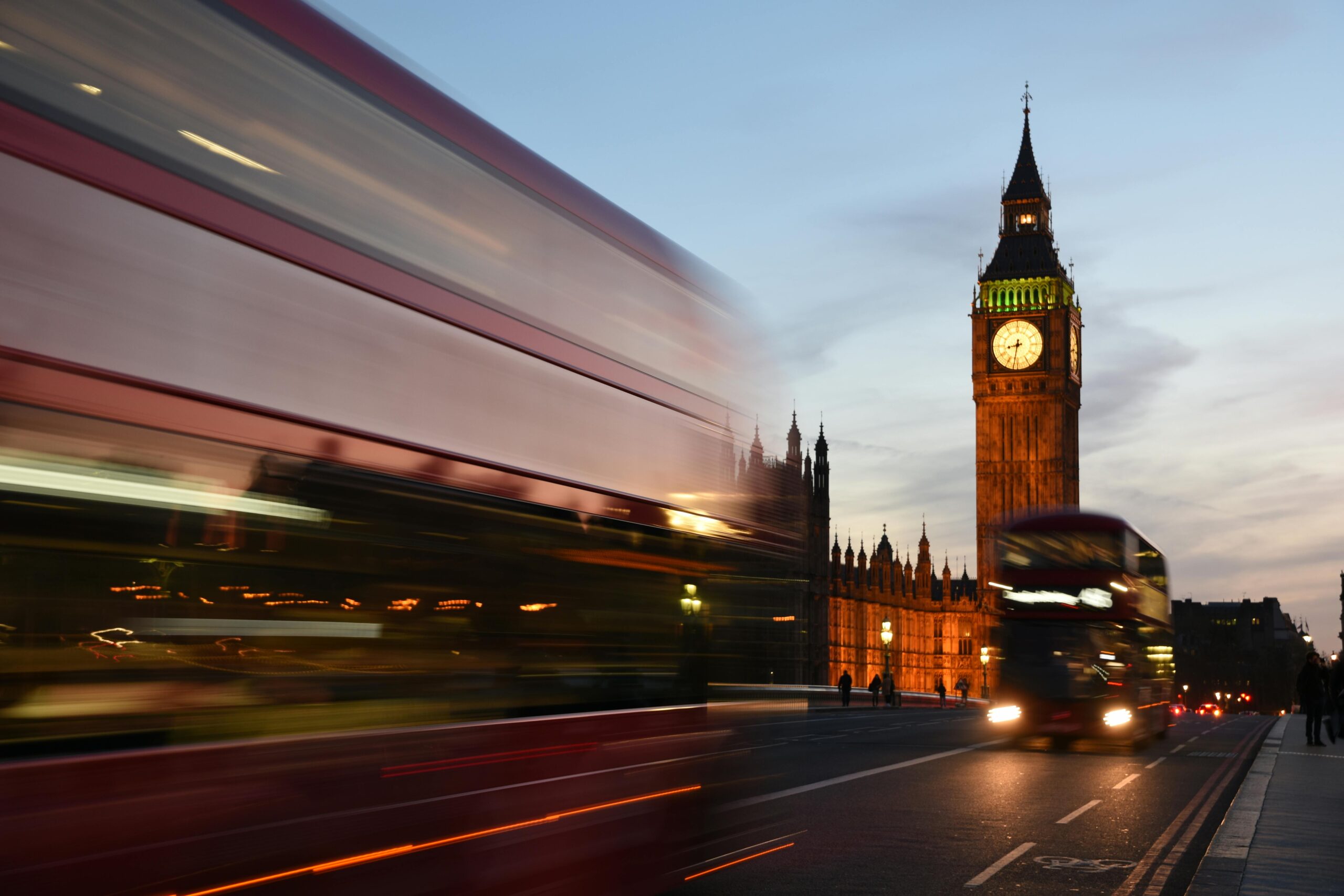How to get around London: a local’s guide
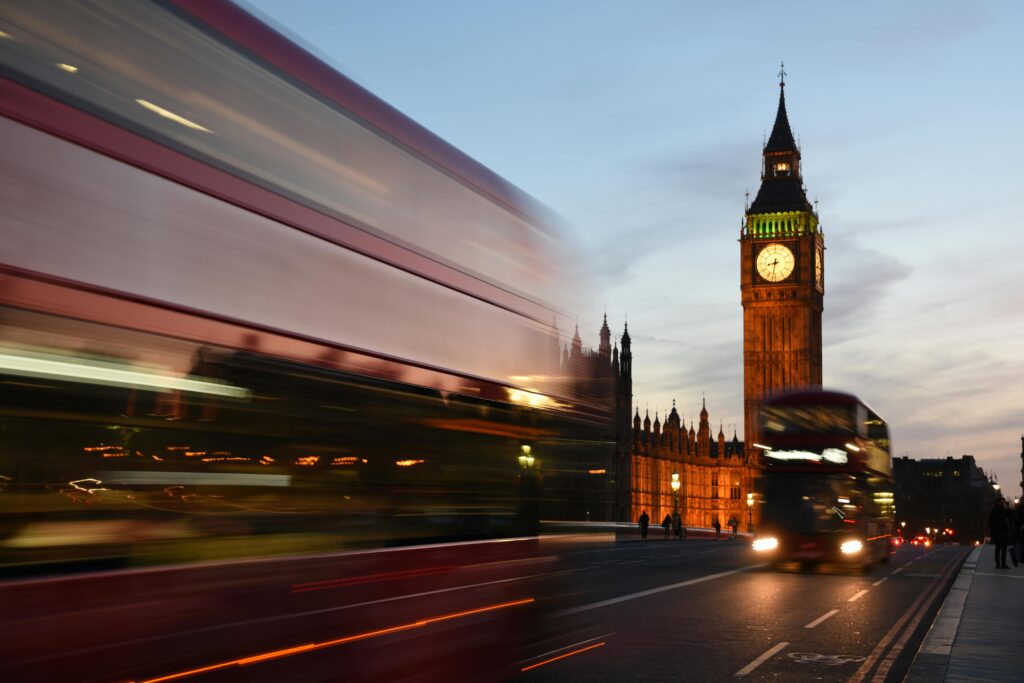
Whether you’re on holiday or moving to London, working out how to get around can be intimidating. But having lived here for a while, I think London’s transport system is one of the easiest to navigate – London is well connected, the transport system is well signposted, Tube lines have names rather than numbers, and the staff on the transport network are helpful.
Despite their reputation for robotic non-communication during their commute, when I have asked a Londoner for directions, they have always been willing to help, despite their initial surprise and slight apprehension at being addressed. It’s as though when you break the unwritten rule against speaking to a stranger on the Tube, it also breaks whatever spell comes over commuting Londoners, and they transform into warm human beings again.
Before getting into the specifics, my number one piece of advice for anyone getting around London is to download Citymapper, a free app which is like a secret superpower. Non-Londoners often comment on how well I know how to get around the city – I actually don’t. I know my usual routes but, apart from that, I’m just using the app. You input your destination and departure point, and the app gives you several route options, with prices and timings. It uses all the transport modalities available in London (which are covered in detail below). You can also put in the time you will be leaving or the time you wish to arrive at. Once you select a particular route, it gives step by step instructions, including where to change trains, where to exit, and walking directions to your destination, as well as live updates when there is an internet connection. There is often no internet connection underground or between tube stops, but the app still works in terms of telling you the next step. Citymapper is also remarkably quick to update when there are delays, for example if a train line is down or a station is closed, and to give alternative options.
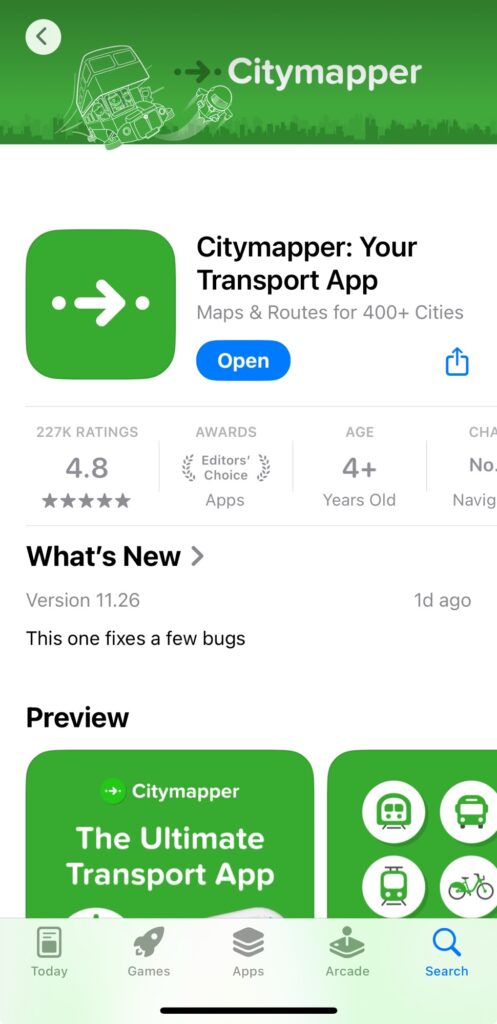
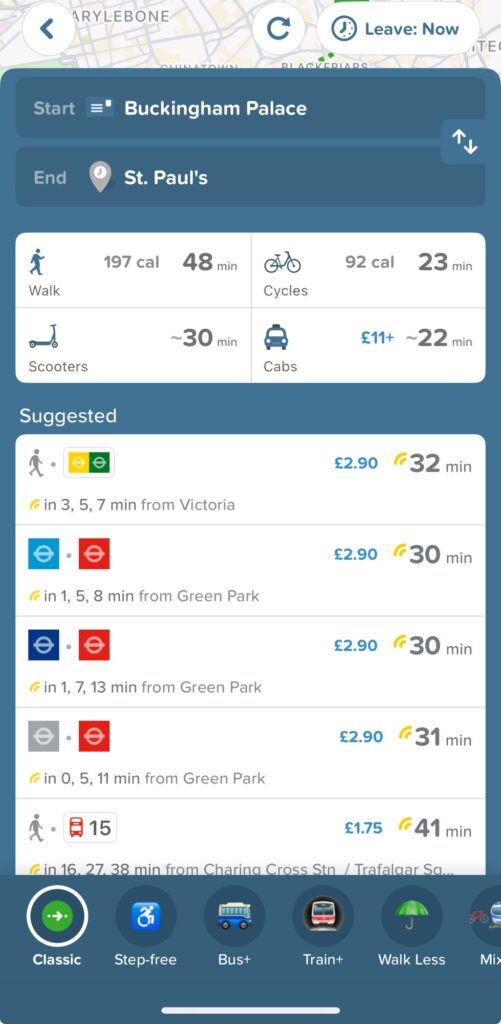
Hot tip: if for some reason you don’t have a sim card and are relying solely on wifi (I don’t recommend this, but I have done it), check the Citymapper route in advance while you are still within wifi range at your hotel/restaurant/museum, and take screen shots of the various steps. This obviously doesn’t work as well as getting live updates, but is a good alternative.
Google Maps can give public transport route suggestions as well (plus, you can download an area for offline use), but Citymapper is a much better option.
You don’t need to buy paper tickets for getting around London, as you can tap a contactless bank card, or use Apple/Google Pay on all forms of transport. You can also buy an Oyster Card if you prefer to keep your transport fund separate, but there is no price difference.
The London Underground (aka the Tube)
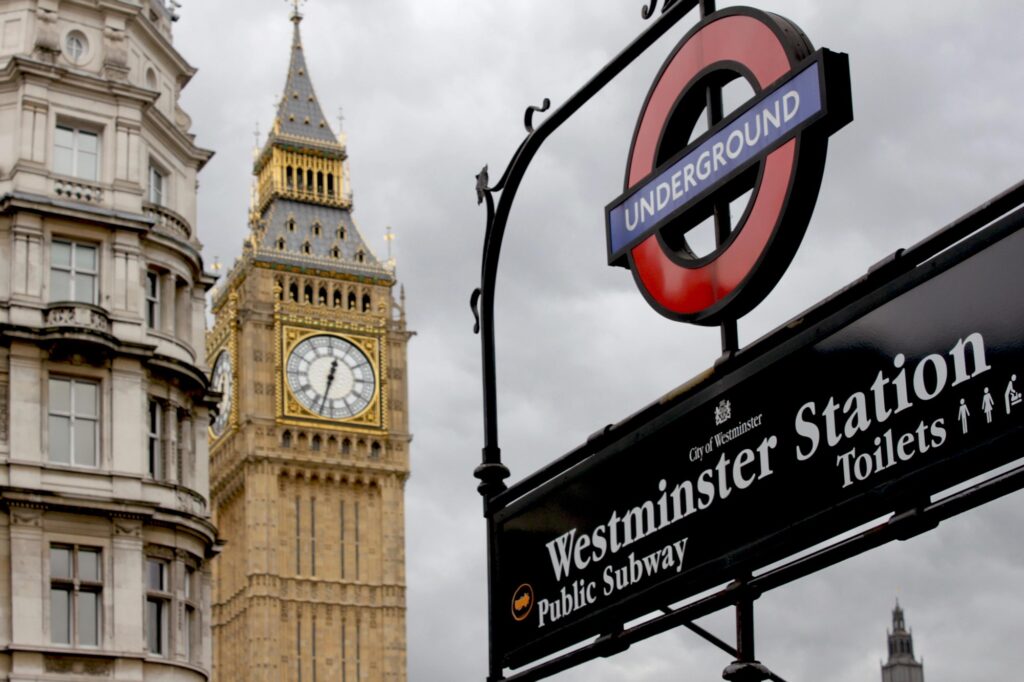
Best for: Quick travel across long distances, especially central London
Avoid during rush hour (7:30–9:30 AM and 5–7 PM)
The Tube is London’s underground rail system, and probably the most reliable form of transport, with trains roughly every two to three minutes. With 11 lines and over 270 stations, it’s the fastest way to get from one side of the city to the other. Each line has a colour and a name (e.g., Central Line is red, Piccadilly is dark blue). Trains run from around 5 AM to midnight, with some lines offering 24-hour service on Fridays and Saturdays.
Tap in with your contactless or Oyster card at the turnstiles when you enter, and tap out at the exit station. It is important that you tap the same card to enter and exit, to avoid being charged twice. You should avoid tapping your entire wallet on the card reader, as this sometimes results in “card clash”, where more than one of your cards is charged. Londoners glide through the Tube turnstiles with remarkably slick efficiency, all while sporting their serious commuter faces. To avoid annoying people during busy times, get your card out and ready before you approach the turnstile, and if you have any issues, step to the side to allow the person behind you to proceed. On the escalators, stand on the right and walk past on the left to avoid silent judgment.
Tube stations are generally not air conditioned, and it can get quite hot underground, even in winter, so you will want removable layers. The constant temperature changes and the crowds on the Tube mean people often get a bit sick after a few days in London – bring hand sanitiser and apply it liberally when you exit a Tube station.
You can take a dog on the Tube for free, but they must be carried on escalators. Keep them off the seats.
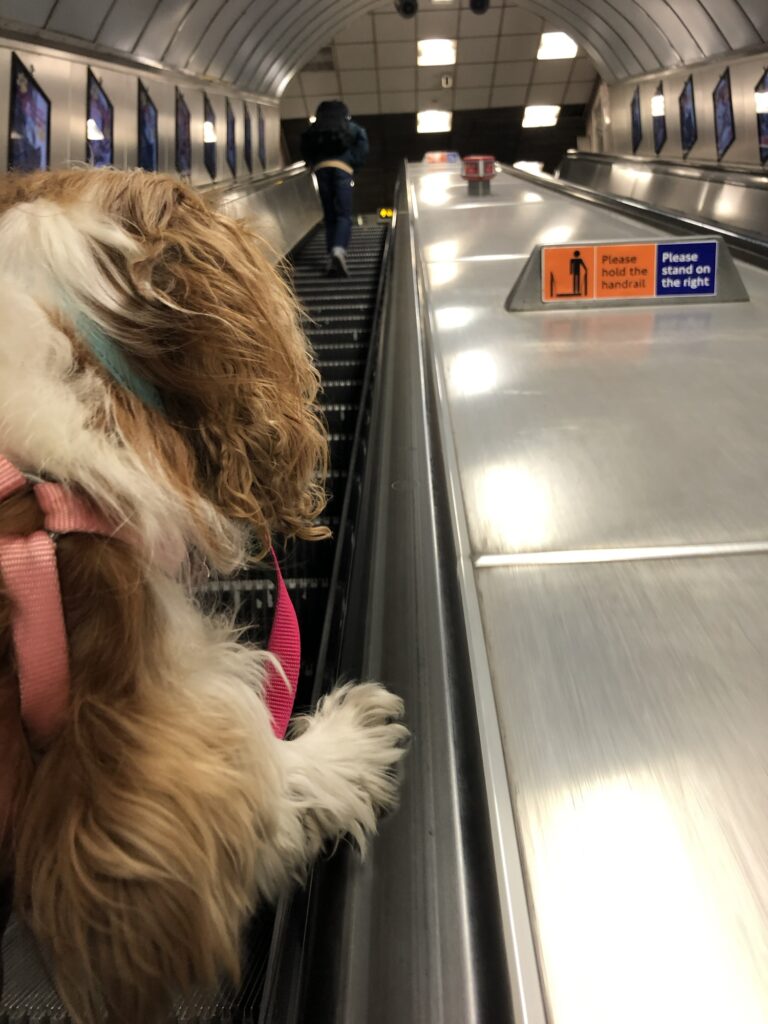
Buses

Best for: Scenic routes, travel above ground, or getting somewhere the Tube doesn’t reach
Avoid if you’re in a rush
When I first moved to London, I finally understood where JK Rowling must have gotten her inspiration for the Knight Bus in Harry Potter, which squeezes through impossibly small areas, and magically misses objects which leap out of its way. If you’ve ever sat at the top of one of London’s iconic red double-decker buses, at the front, you have precisely this feeling. London buses make seemingly impossible turns and casually dodge objects you are sure they will hit, all in a very nonchalant English fashion.
Buses are cheaper than the Tube, and are often helpful in areas with bad Tube connections. Being above ground, bus travel also helps you to get to know the city slightly better than the Tube, and some bus routes like the 11 or the 88 offer great views of the city. At Christmas time, take the 139 for a cruise along Oxford and Regent streets to see the Christmas lights. Be warned: the old saying about London buses, “you wait ages for one, and then two come along at once”, is often true. Buses can be less reliable than the Tube, and for some reason this is always compounded when you are running late. (Honestly, London buses are like office printers when you’re in a rush – they smell fear and will make things worse for you. If you are pressed for time, take a taxi.)
Bus routes have numbers, with the name of the final destination appearing on the external front of the bus. At your bus stop, hold your arm out when you see your bus approaching, and it will stop (the only time they don’t stop is when they are overcrowded). Tap in with your contactless or Oyster card on the card reader next to the driver when you get onto the bus (you can’t pay with cash). Unlike the Tube, you don’t tap out on a London bus. When you want to get off, press the stop button once before your desired stop, and the driver will stop. Citymapper’s live updates work particularly well on London buses, as long as you have an internet connection, with notifications like “get off at the next stop”.
You can also take dogs on buses for free.
Other trains
Although most tourist areas are well served by the Tube, London’s rail network is more extensive. The London Overground connects areas not served by the Underground. The DLR (Docklands Light Railway) is great for East London and London City Airport. National Rail covers areas outside of London, like Oxford, Brighton and Stradford-upon-Avon.
They do accept Oyster and contactless payments within London fare zones. However, if you are unsure and you are going relatively far out, buy a ticket in advance (the Trainline app is the best for this), instead of tapping with contactless. If you know that you are heading out of London, booking your ticket in advance on Trainline sometimes means a slight saving on the ticket price.
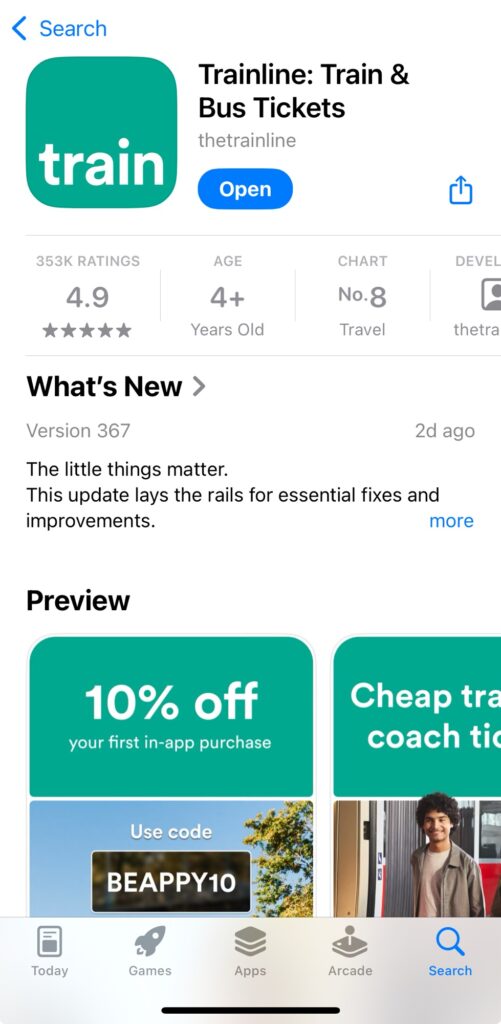
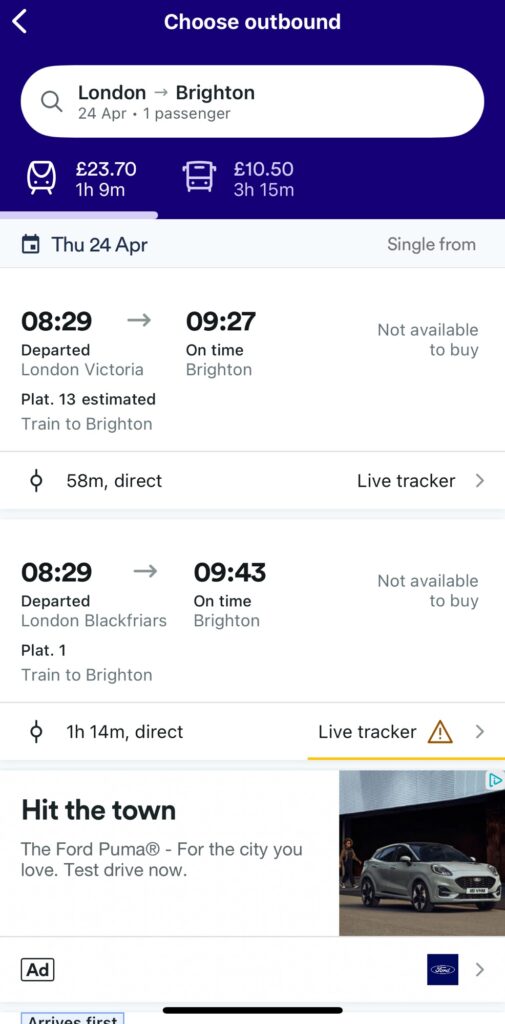
River Bus (Thames Clippers/ferries)
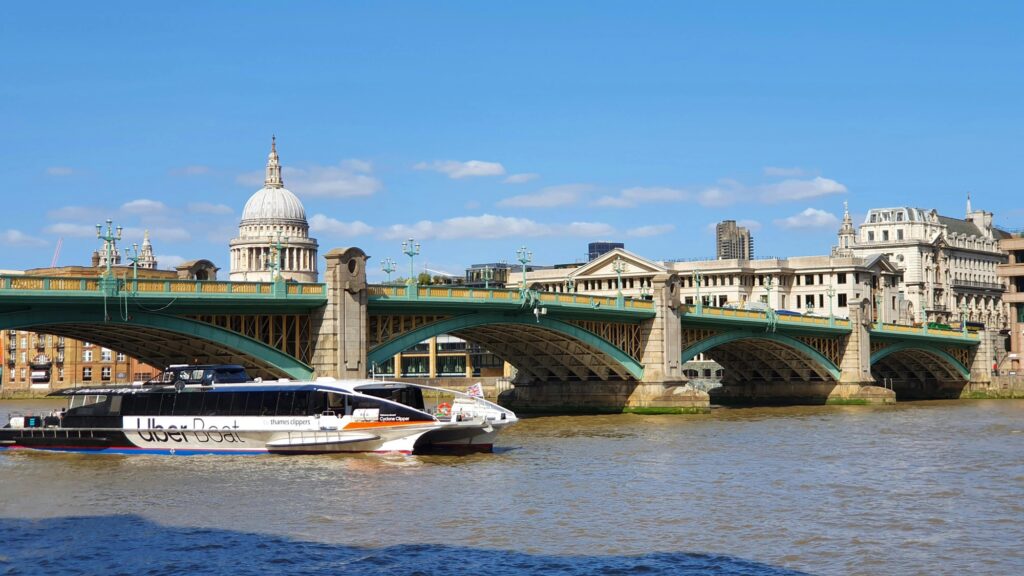
Best for: A scenic way to get from West to East London
Avoid when you’re in a rush
If you’re visiting sights along the Thames (like Westminster, London Bridge, the Globe or Greenwich), the River Bus is a stunning option when the weather is good, and it goes from Putney all the way to Woolwich. If you have the time, a seat on the top deck is a breezy way of skipping rush hour on the Tube.
The River Bus is more expensive than the Tube. Find pricing information on Citymapper or here. Dogs are allowed on board, and should be kept on a lead.
Taxis
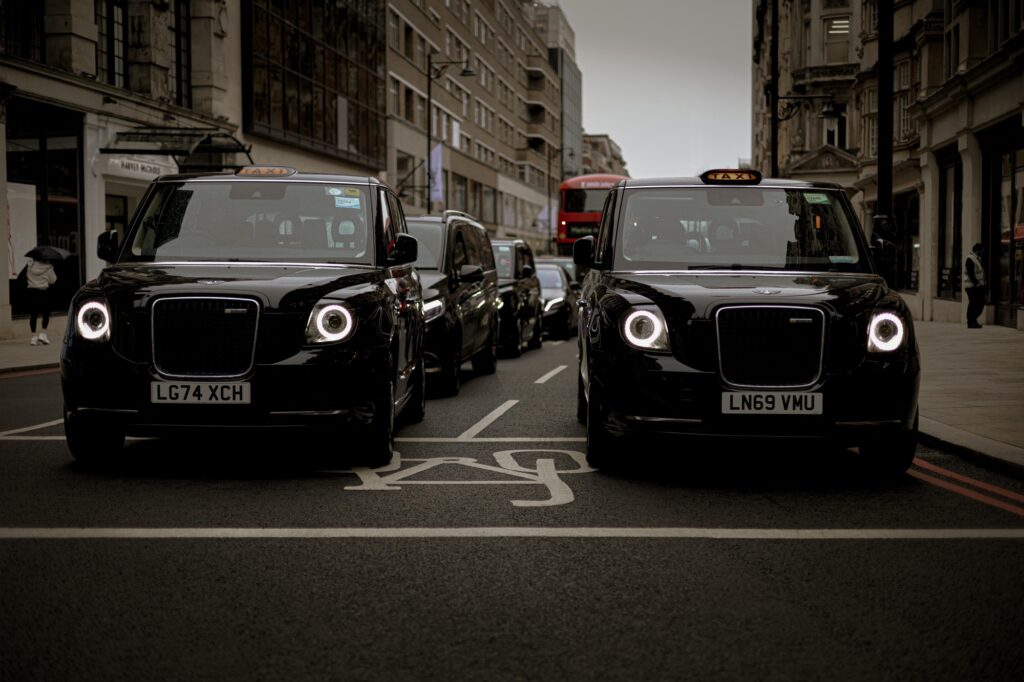
Best for: Rainy days, late nights, or airport transfers
London’s black cabs are legendary and licensed, but pricey. You can get one at a taxi rank, which are outside of airports and large train stations, such as Liverpool Street Station and King’s Cross. Taxi ranks are London’s great equaliser (the King’s Cross one is great for celeb spotting!) and there is usually an orderly queue. Join the back of the queue in a very British fashion, and when it is your turn, go to the first taxi in the line. Alternatively, you can hail a London black cab in the wild (ie, when you see them passing on the road – note that a London black cab is the only kind of taxi which may collect passengers in this way). If their yellow light is on, indicating that they are free, put your arm out out, as you would for a bus, and they will stop. Do not shout “taxi!” – very un-British. You can also call a black cab on demand or in advance on the Free Now app.
Either way, take note of a point of English etiquette: before getting into the taxi, approach the front window on the passenger side, and tell the driver where you would like to go – they are famous for knowing London very well. Get into the back of the taxi, where there are usually six seats (the driver might get freaked out if you try to get into the front seat, which is partitioned off for security).
Uber, Bolt, and other taxis on Free Now are usually cheaper than black cabs (you can check the price estimate on the app). A common misconception is that taxis are the fastest way to get anywhere in London. This is worth checking on Citymapper – depending on the time of day, the Tube might be much faster, and is always much cheaper.
Dogs are allowed in London black cabs, but not usually in other kinds of taxis. However, Uber in London now lets you toggle your options to “Uber Pet” – they charge more than ordinary Ubers and can take a bit longer to arrive, but are often still slightly cheaper than black cabs.

Cycling
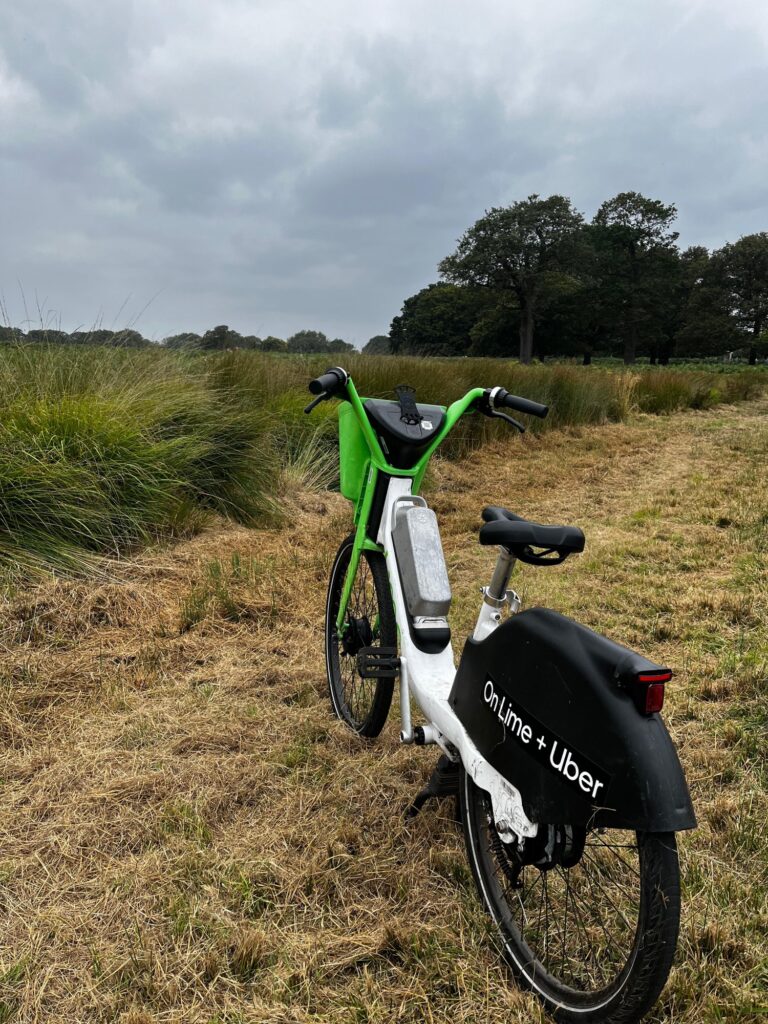
Best for: Confident cyclists
I must confess that I am not a confident cyclist, and I therefore do not cycle on London roads, but my husband and a lot of my friends love it.
Santander Cycles (aka “Boris Bikes”) are available all over central London. You can hire one through the Santander Cycles app. Lime Bikes work in the same way, through the Lime app. Do not cycle if you have been drinking or if you don’t have a helmet.
Walking
Best for: Short distances, getting to know the city
My favourite way to get around is walking, and one of the best things about London is that you stumble upon really cool, unique places when you do. Remember the song “Pop goes the weasel”? I discovered these lines painted on the outside of a pub called The Eagle, just off City Road, during my commute:
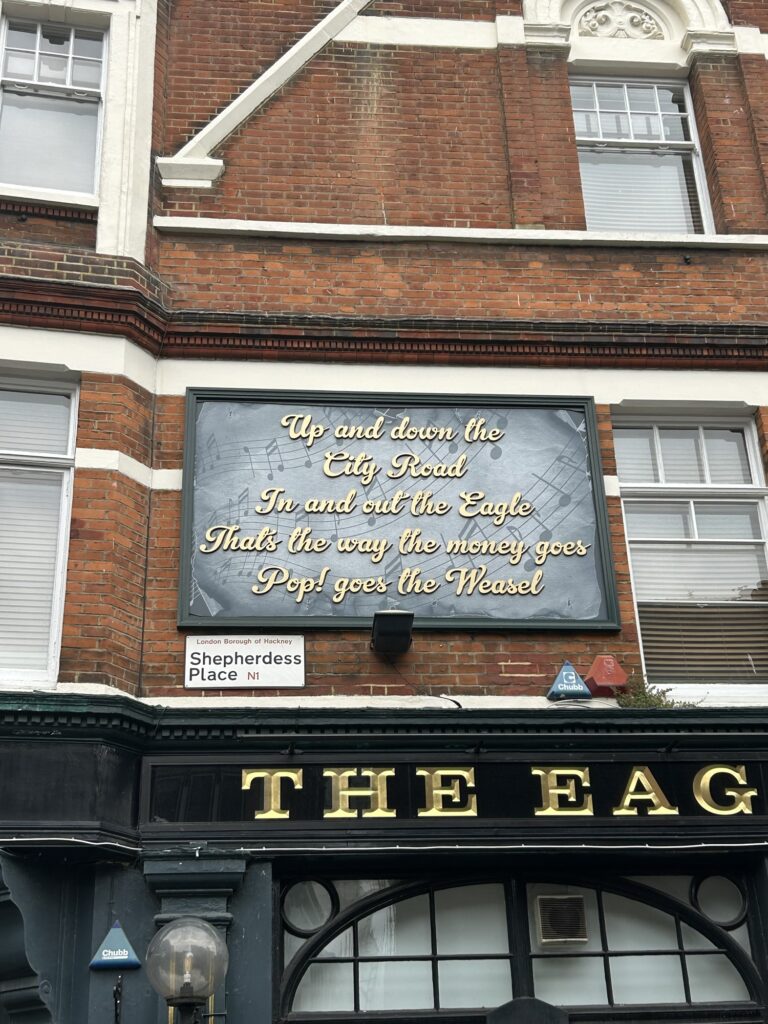
A word of warning: it is very easy to rack up your steps in London, so make sure your shoes are suitable for upwards of 12,000 steps per day. Every time I walk past the Royal Exchange I remember the time when, visiting London as a tourist, I had a tantrum and cried on the steps there because my feet were sore (yes, this happened when I was an adult).
NB: London drivers are great, and very patient with pedestrians, but traffic patterns can be a bit confusing – do a 360 degree turn before crossing the road.
Car hire/self drive
Generally I don’t recommend this. If you are new to driving in London, it can be a stressful experience. London has a surprising number of one way streets and unexpected road closures, so a route which seems simple on a map becomes quite complicated when you’re driving, and the lack of parking in the city means cars are impractical. Also, like many European cities, London has rules about low emissions and congestion, and before you know it, you’ve incurred a fine for entering a tunnel or getting into the congestion zone.
However, if you must do it (all Londoners have to go to the Cotswolds, after all), you can hire cars from any of the usual suspects. Check what the rental agency will require from you, though typically they will require a driver’s licence and a credit card with a sufficient limit to process a deposit. You can also hire cars by the hour through Zipcar and Hiya Car, which is helpful for shorter day trips.
If you get lost
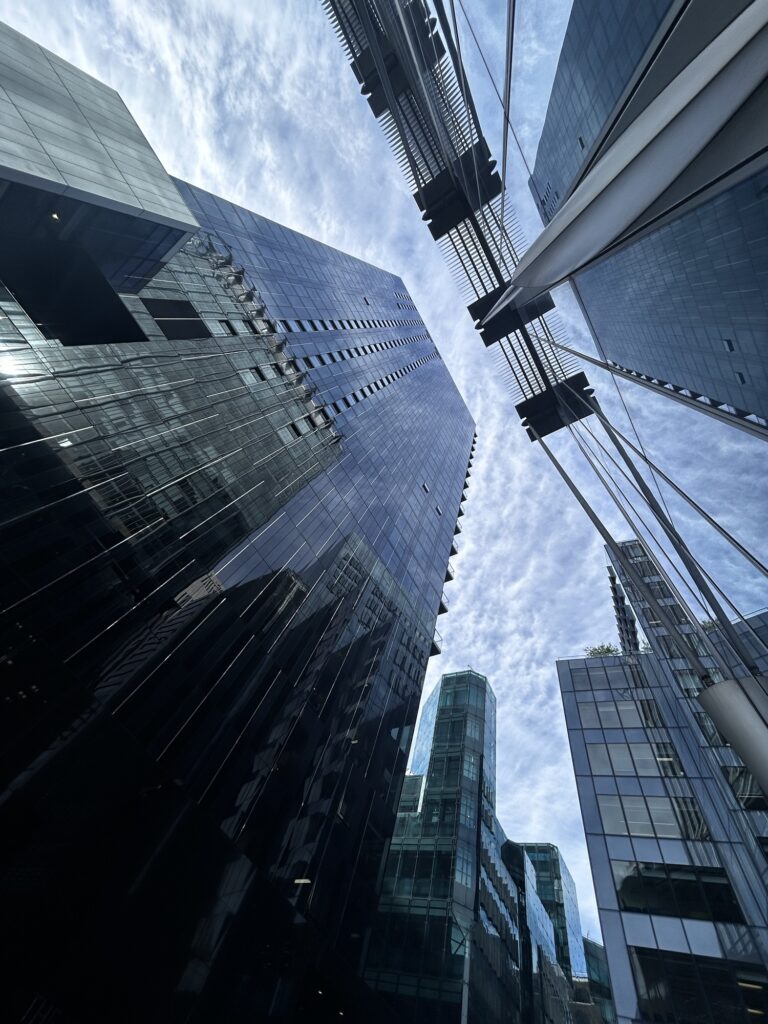
The most important thing to memorise in London is the closest Tube station to where you are staying. In my first few months living in London, I got lost, alone, with my tiny dog and a dead phone, because I wanted to go to a cupcake shop instead of going straight home. I managed to find the cupcake shop (finding confectionary has never been a problem for me) but then couldn’t work out how to get home. I went into the first Tube station I could find and apologetically asked the staff how to get to my closest station. I’m not sure why I was so nervous to ask, but they were friendly, polite, and more than happy to help.
Now I generally tell people that it is actually quite hard to get lost in London, as long as you know the name of your local Tube station, because the staff will be able to tell you how to get there. Most of the more touristy areas of London have lots of Tube stations, but if you can’t find one, walk into the first shop you can find and ask the people working there where the closest one is.
Lastly, if you do have a little menty b, don’t worry – an ugly Tube cry is basically a rite of passage in London.

